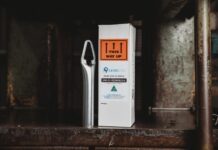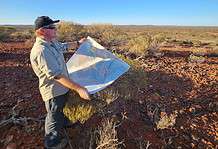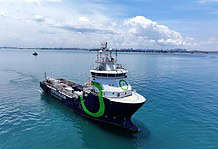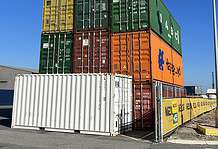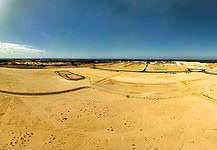 The Australian Mining Review continues its special three-part series on the unprecedented expansion of Queensland’s mining industry, looking at the state’s big boom towns and how they are tracking. LESS than eight weeks after delivering a near-fatal blow to a stricken Labor Party in Queensland, the state’s new Liberal National Coalition Government told The Australian Mining
The Australian Mining Review continues its special three-part series on the unprecedented expansion of Queensland’s mining industry, looking at the state’s big boom towns and how they are tracking. LESS than eight weeks after delivering a near-fatal blow to a stricken Labor Party in Queensland, the state’s new Liberal National Coalition Government told The Australian Mining
Review that the future of the resources sector is secure under leader Campbell Newman.
Basking in the afterglow of a defeat that reduced the ALP’s hold to just seven seats in a Parliament of 89, the new Government quickly sought to highlight its dedication to the resources sector,
stating that it was determined to do everything it could to “get the state back on track”.
New State Natural Resources and Mines minister Andrew Cripps said the industry was one of the four pillars around which the Government would grow the economy.
“We want to re-establish Queensland as a world leader in the resources sector. It is already a significant economic contributor, but resources development also contributes directly to employment,
improved standards of living and wealth creation right across the state,” Mr Cripps said.
“Our plan will provide the investment certainty the industry needs to grow. It includes: improved training, career and investment opportunities; increasing support to cut red tape; building
infrastructure; and a better system of regional planning.”
Mr Cripps said that the new Government had committed to three new Royalties for the Regions initiatives: the Roads to Resources Program; the Resource Community Building Fund; and the Floodplain Security Scheme. “[These] will deliver $495 million over the next four years and an ongoing commitment of $210 million each year after that to build roads, community buildings and facilities, and flood mitigation infrastructure,” he said. “Establishing a framework to begin identifying projects for investment under these initiatives is part of our First 100 Day Action Plan: demonstrating the level of dedication the…Government has to the resources sector.”
Queensland Resources Council chief executive Michael Roche stated that he was “upbeat” about the change in government, and said he was working hard to capitalise on his organisation’s
relationship building to ensure close partnerships with the new Government’s key ministers and Premier. “With the rest of the business community, the Queensland resource sector is looking forward to Premier Newman and his LNP team promoting good policy to enable the sector to capitalise on the generational opportunities that await,” Mr Roche said.
New port proposal and approval developments The Newman Government has plunged head first into the mining approvals process, rubber-stamping two major mining projects and simultaneously rejecting two others since coming to power.
Pacific National and BHP Billiton Mitsubishi Alliance (BMA) were the big winners, with the former given the nod to expand its freight terminal at Stuart in South Townsville. BMA was granted
approval to proceed with proposed changes to a rail route from its Caval Ridge coal mine near Moranbah to the Queensland coast, which will result in a more direct route and reduce noise
pollution near residential areas. The Government’s veto of two projects resulted from a Coalition pledge during its election campaign that large stretches of farmland would remain off-limits
to miners. The decision affected New Hope Corporation and its plan to double coal production to 10 million tonnes, while French company Ambre Energy’s planned $3 billion coal-to-liquid project on farmland near Toowoomba was the second major proposal rejected. Details of a new coal terminal proposal for Dudgeon Point, about 25km south of Mackay, were released for
public comment in mid-April. The North Queensland Bulk Ports Corporation and a consortium including Indian group Adani Mining plan to build two coal terminals at a cost of around $10 billion. If approved, the ambitious project will involve: building two terminals with a combined coal export capacity of up to 180 million tonnes per annum, with associated infrastructure; construction of six rail loops, train unloading facilities and a rail connection to the Goonyella rail system, with a rail overpass at Hay Point Road; development of offshore wharf facilities for up to 10 ship berths, with two connecting jetties; dredging of about 15 million cubic metres to create berth pockets and a departure apron for ships; and expansion of tug facilities to accommodate up to 10 additional tug and service berths.
The proposal has attracted glowing endorsement from Queensland Deputy Premier and State Development, Infrastructure and Planning minister Jeff Seeney, who touted the economic
and investment benefits it could bring to Queensland.
“If approval is granted, Dudgeon Point will become one of the largest ports in the world. It will open up Mackay to aninternational coal export market, hauling in billions of dollars for Queensland’s economy,” Mr Seeney said in a statement. “When operating at full capacity, the terminals will more than double the existing scale of the adjacent Hay Point and Dalrymple Bay coal export facilities.
“An increase in coal export capacity will attract significant investment to the area, which means a shot in the arm for the local economy and significant growth for the Queensland coal export industry.”
Coordinator-General Barry Broe said the project was declared a significant project in late 2011, meaning it had the potential to impact on a number of environmental values, and would require
approval from local, state and federal governments.
“Public consultation is a valued aspect of the assessment process and we strongly encourage the community to view the draft terms of reference online or access [them] at local libraries and councils,” Mr Broe said. Mount Isa One of the country’s most famous mining cities, Mount Isa lies in the gulf country region of Queensland, about 900km from Townsville. It is the administrative, commercial and industrial centre of North West Queensland, and Mayor John Malony said mining and resources were the region’s ‘raison d’être’. Xstrata owns Mt Isa Mines, the city’s major mining operation. The site opened in 1923, and the operation now comprises two separate mining and processing streams: copper and zinc-lead-silver. Mount Isa Mines’ zinc operations include: the George Fisher underground zinc-lead mine, from which 3.1mtpa of ore is mined; two open pit zinc-lead mines named Black Star and Handlebar Hill; a concentrator with 6.5mtpa throughput capacity; and a lead smelter.
The annual Mount Isa Mining Expo is the region’s premier resources event, and allows exhibitors to showcase their products and services directly to the mining sector. The 2012 Expo is scheduled to run from May 16 to 18, and is expected to attract both national and international exhibitors. Registrations can be completed online or by calling the Mount Isa Chamber of Commerce. Chinchilla and Dalby Mining and resources play critical roles in Queensland’s Western Downs region. Much of the activity is undertaken near boom towns Chinchilla and Dalby, about
300km and 200km west of Brisbane respectively.
Due to the mining boom, population growth in the area is exploding and unemployment is hovering at about 2 per cent, well below Australia’s average unemployment levels. According to Western Downs Regional Council Mayorextractive resources and industries, including rich agricultural plains, high-quality grazing land, coal seam gas, underground coal gasification, underground and open cut mining, coaland gas-fired power stations, solar power and a wind farm.
Like other boom areas in Queensland, such as Moranbah, Western Downs is grappling with issues including housing affordability and a lack of skilled workers. To mitigate these problems, the Council has developed a housing strategy and action plan plus a housing fund and trust, all designed to assist those displaced by high rents and ensure that skilled workers and families can be accommodated locally.
The lack of skilled workers and the encroachment by the resource sector on local business employees resulted in the Council establishing an official jobs and skills development officer last year. This was followed by the founding of a jobs and skills task group, plus a skills strategy, to be released shortly, that will assist in facilitating a labour market that is sustainable for the region in the short, medium and long terms. Toowoomba Toowoomba is Australia’s second largest inland city and has an estimated population of 122,000. Just 130km southeast of Brisbane, the mountain city
is the gateway to the vast Surat Basin region, which is part of the Great Artesian Basin of Australia.
The Surat Basin extends across 270,000 square kilometres and the southern third of the basin lies in northern NSW. Much of the basin is mined for coal and coal seam methane.
Existing and proposed operations in the Surat Basin region include: the Wilkie Creek, Woori, Wandoan, Elimatta and Glen Wilga coal projects; Felton Mine and the Dimethyl Ether Pilot Plant project; the Cameby Downs expansion project; and stage three development of the New Acland coal mine. Toowoomba plays a critical role in providing products and services to the mining sector, and each year hosts the Surat Basin Energy and Mining Expo at its showgrounds – the largest in Southeast Queensland.
This year’s event is scheduled for June 20 and 21, with about 200 exhibitors expected to participate. A new inclusion this year is an ‘underground luncheon’ that will feature industry guest speakers including former WA goldfield miner and Usher Wealth founder Holly Grofski, Rio Tinto health and wellness coordinator David Nilson, and Beaconsfield mine disaster survivor Brant Webb.
Each will speak of their own experiences within the mining industry and offer advice on a range of issues facing mine workers, including physical fitness and well-being, mine safety and finance.
Event manager Bob Carroll said features such as the luncheon not only provided numerous networking opportunities but also allowed both exhibitors and visitors to gain more from the event, creating “a bit of excitement”.
Ray Brown, projects in the pipeline for the area have an estimated value of $140 billion in capital investment and will create 12,500 jobs. Dubbed the ‘Energy Capital of Queensland’, the Western Downs region has a huge range of renewable and
By Chris Foley


